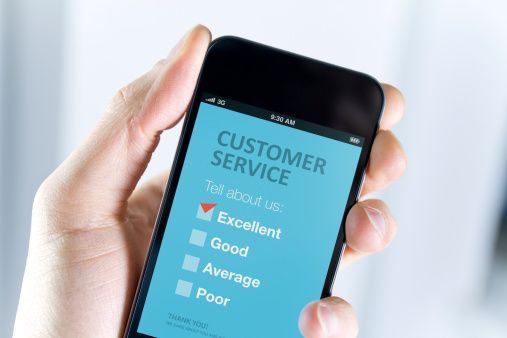 MISTAKE: Relying too heavily on individual sales representatives to develop and sustain relationships with each customer assigned to them. This is not a good idea for mid-market companies because sales representatives “depend less on the brand,” on which they should be focused, “and more on individual personalities, which come and go,” CustomerThink.com reported.
MISTAKE: Relying too heavily on individual sales representatives to develop and sustain relationships with each customer assigned to them. This is not a good idea for mid-market companies because sales representatives “depend less on the brand,” on which they should be focused, “and more on individual personalities, which come and go,” CustomerThink.com reported.
SOLUTION: Assigning each account to a dedicated, multi-member account team. Team members should be responsible for creating “multiple points of contact, which is a way to diffuse single-source, relationship-driven customer loyalty,” Bob Domenz, founder and CEO of Avenue, told CustomerThink.com.
MISTAKE: Following a generalized, “seat-of-the-pants” approach to fostering loyalty through customer interactions. One example, according to a report from Forrester Research: Instructing staff that your company wants to up the loyalty ante by “delighting” its customers—and leaving the rest to them.
SOLUTION: Large companies aren’t the only ones that need to adopt a customer experience strategy to “focus the organization on delivering the right type of customer interactions”—i.e., those that produce a higher degree of customer loyalty. Devise a customer experience strategy that aligns closely with “the specifics of your corporate strategy and brand,” Forrester suggested in its report.
MISTAKE: Operating like all loyal customers are created equal. While customer loyalty can “keep people doing business with you,” according to the National Center for the Middle Market blog, there are multiple definitions of “customer loyalty,” and not all are favorable. Some customers may continue to do business with a company because no obvious or readily available alternative exists. Such customers’ loyalty might also center on a particular product feature, price, or ongoing discount. It could be the product of an appreciation for a type of bribery. “These reasons don’t help because the customer feels affinity to a particular circumstance and not to your brand or product,” the blog stated. “Not all customers will ever feel enough of a connection to your business to become brand ambassadors.”
SOLUTION: Focus your efforts on “super customers” who could become fiercely loyal. To identify these customers, the blog suggested, look at customers’ past behavior, using big data systems, software, and expertise to properly segment them. Try to identify which customers buy regularly or in large quantities, as well as which customers have “stayed” with your company for the longest duration. Assess, too, whether there are customers who have convinced others to do business with your company. These are your best bets for long-term loyalty.
MISTAKE: Putting branding on the back burner. Branding in mid-market organizations often becomes a second-level priority, Domenz said. These companies then miss opportunities to build long-term results.
SOLUTION: Set an early focus on marketing the brand as an executive function that exists alongside sales, rather than simply operating as a sales support function. Treat marketing and sales as equal priorities. Ensure that departments work together to meet objectives that include bolstering customer loyalty by touting the brand and its identity.
Customer loyalty will never be the only factor in middle-market companies’ success—but it will always be an important one. Making a concerted effort to avoid giving it away should be a priority for your organization now and in the future.

Chief Executive Group exists to improve the performance of U.S. CEOs, senior executives and public-company directors, helping you grow your companies, build your communities and strengthen society. Learn more at chiefexecutivegroup.com.
0

1:00 - 5:00 pm
Over 70% of Executives Surveyed Agree: Many Strategic Planning Efforts Lack Systematic Approach Tips for Enhancing Your Strategic Planning Process
Executives expressed frustration with their current strategic planning process. Issues include:
Steve Rutan and Denise Harrison have put together an afternoon workshop that will provide the tools you need to address these concerns. They have worked with hundreds of executives to develop a systematic approach that will enable your team to make better decisions during strategic planning. Steve and Denise will walk you through exercises for prioritizing your lists and steps that will reset and reinvigorate your process. This will be a hands-on workshop that will enable you to think about your business as you use the tools that are being presented. If you are ready for a Strategic Planning tune-up, select this workshop in your registration form. The additional fee of $695 will be added to your total.

2:00 - 5:00 pm
Female leaders face the same issues all leaders do, but they often face additional challenges too. In this peer session, we will facilitate a discussion of best practices and how to overcome common barriers to help women leaders be more effective within and outside their organizations.
Limited space available.

10:30 - 5:00 pm
General’s Retreat at Hermitage Golf Course
Sponsored by UBS
General’s Retreat, built in 1986 with architect Gary Roger Baird, has been voted the “Best Golf Course in Nashville” and is a “must play” when visiting the Nashville, Tennessee area. With the beautiful setting along the Cumberland River, golfers of all capabilities will thoroughly enjoy the golf, scenery and hospitality.
The golf outing fee includes transportation to and from the hotel, greens/cart fees, use of practice facilities, and boxed lunch. The bus will leave the hotel at 10:30 am for a noon shotgun start and return to the hotel after the cocktail reception following the completion of the round.